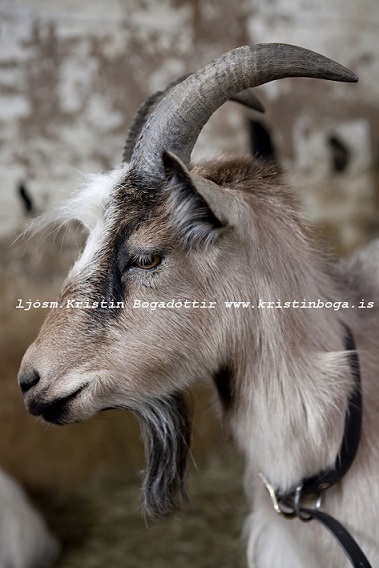 I have published a new Goat Post card! The photographer Kristin Bogadóttir, www.kristinboga.is took this great picture. Ég var að gefa út nýtt geitapóstkort! Ljósmyndarinn Kristín Bogadóttir, www.kristinboga.is tók þessa dásamlegu mynd.
0 Comments
Kynnti íslenska geitastofninn og möguleika hans á sviði geitafiðu á Sveitasælu í reiðhöllinni á Sauðárkróki 23. ágúst s.l.
Ég sýndi afrakstur tilraunastarfsemi minnar með geitafiðu. Handspunnið band og vélspunnið band úr geitafiðu sem heitir kasmír á flestum öllum tungumálum. Kasmír er sem sagt ull af geit, en heitir á íslensku fiða eða geitafiða. Einnig var ég með til sölu landakortið Ísland geitanna og póstkortin þrjú sem ég hef gefið út.Það kom margt fólk að borðinu mínu sem var staðsett nálægt fulltrúa geitastofnsins en það voru geitur úr Keldudal í Skagafirði. Spaugilegar geitur sem að nutu athyglinnar óspart en voru aflslappaðar yfir henni. On August 23rd I introduced the Icelandic goat race and its possibilities at the agricultural fair at the riding hall in Sauðárkrókur N - Iceland. I showed the outcome of the work with the Iceland cashmere both hand spun and machine spun yarns. Also I presented the Iceland map of the goats and the three postcards that I have published. Many people approached my table that was situated close to the representatives of the goat race: the goats from Keldudalur farm in Skagafjörður. Witty goats that enjoyed the attention they got but were totally cool about it. This spring I have been working on a farm, weaving and combing goats on another farm.
The colours in the spring piece are the ones springing out of my mind when looking out on the horizon or scrutinizing the vegetation. The goats were combed for their soft undercoat called cashmere. Their cashmere is not first class but it is lush and beautiful in spite of that and the goats look classy when they have been groomed. The spring piece in my loom keeps growing and is more than 2 meters by now. It started with the yellowish grey and is now in the bluish dark grey of the sky. You can see from the May and 30th of April blog how the rug started out. Þetta vor hefur verið vefnaður, sveitastörf, sauðburður og kembing geita. Fiðan er dásamleg af geitunum þó svo hún flokkist ekki sem fyrsta flokks efni. En geiturnar verða svo fallegar eftir kembinguna. Vorstykkið í vefstólnum er yfir 2 m að lengd og hefur ferðast frá gul gráu yfir í himinblátt og svargráblátt. Litir vorsins þetta árið eins og hugur minn upplifir það. Það er hægt að skoða í færslunum frá maí og 30. apríl hvernig það byrjaði. My latest Icelandic Goat propaganda posters. They look alike but one is in Icelandic and the other one in English.
I didn't realize that I enjoyed making things like this before I tried it. The reason was the annual Farmers Fair in Skagafjörður, N Iceland where I have been at a stall representing the goats, or actually the goats from the farm Keldudalur in Skagafjörður do the acutal representing of the goats, I am their spokes person, The kid on this poster is now a yearling and was at the show with her sisters, brothers and cousins and her mother too. She is not any more the cute little kid she was last year but not yet the elegant goat she will be. Can't remember her name but will find out somehow. I made this piece in honour of the Icelandic Goat Race that is an endangered species, to remind the watcher of the worst possible that could happen: extinct. I think it would be terrible if the Icelandic farming societies can't take the responsibility for the goats.
They keep talking about the horse that is so sacred as it has not been mixed with other races since the 9th century, they talk about the sheep ( slightly mixed with other breeds), the hens and dogs that are for sure mixed with other breeds, the cows that are a lovely breed since the 9th century. They are interested in importing foreign new breeds: angora rabbits, mink, hens, etc. but the thought of taking care of what is here already, the goats seems to be beyond their thinking. They are Búnaðarsamband Íslands or Farmers association of Iceland The second exhibition I took part in this year is over now. I dismounted my piece of art in the rain today, it was also mounted in the rain in May this year. Been a rainy summer in Iceland and the Warp of Fate is bleak, sad and not looking well as is the future for us here on this island Iceland, because that is what the Warp of Fate tells us.
The witches, fortune tellers and other mystical figures of the past, were they not just artists, conceptual and political artists as we call some of them today? I took part in the agricultural fair in Skagafjörður, N-Iceland last Saturday. I represented the goats of Iceland that are an endangered species, very much so. Only about 850 left. You can see more about these precious goats on my goat site. I hastily made a poster to stress the fact, and if you care to you can print it out and hang it up where the public can lay eyes on it. One in English and the other one in Icelandic. Feel free to use it. You can see more about outdoor spinning on my website here
I was spinning goat hair on the market square in Kristinestad, Finland when the newpaper man came by.
I have two pieces of art work on display outside this summer. Both are affected by forces of nature.
The one in the exhibition "Under the clear sky" in Reykjavik is affected by the weather. The one in Finland is affected by the weather in the sense that it has been warm with occasional rainfall and the vegetation is growing real fast. If you look at my earlier post about exhibitions this summer you can see images of the two works looking different at earlier stage. The warp of fate has been torn apart by the rain and the storm in Reykjavik a couple of days ago. Can we affect fate? And the question also is should I affect fate by going to Urðastígur and replace the threads in the warp? What do you think? The great "Last goat of Iceland" in "Muu maa" at Haihatus, Joutsa in Finland is affected by the growth of plants in the meadow it is lying on. If the grass and flowering plants are left unattended they might suffocate the goat and it will disappear. This great goat represents the Icelandic goat race that is about 850 goats now and is and endangered species. |
AuthorAnna María Lind, MA Textile Art Winchester School of Art. Archives
June 2024
|
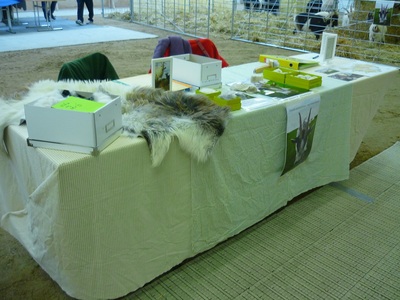
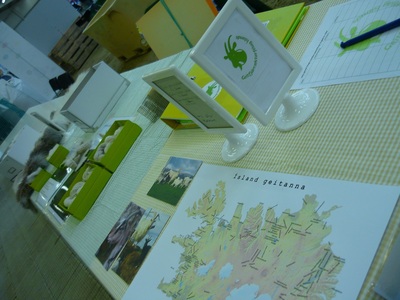
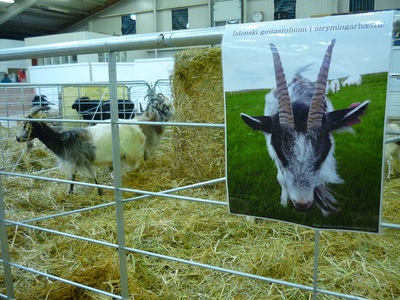
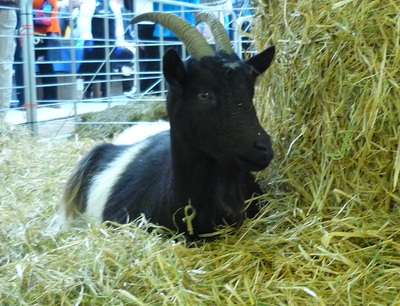
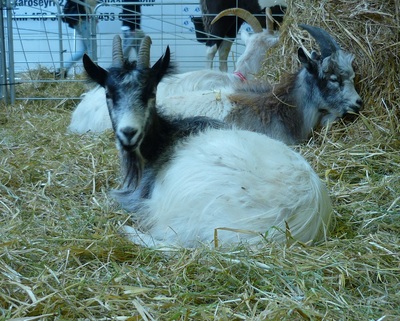
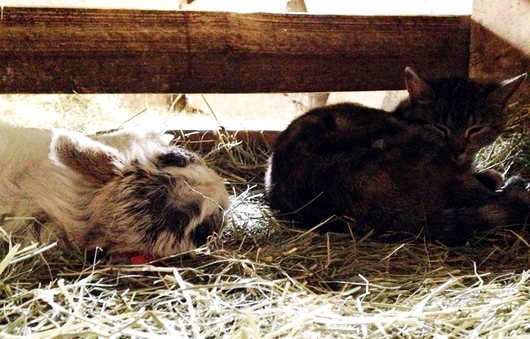
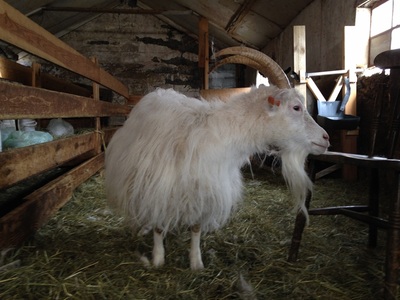
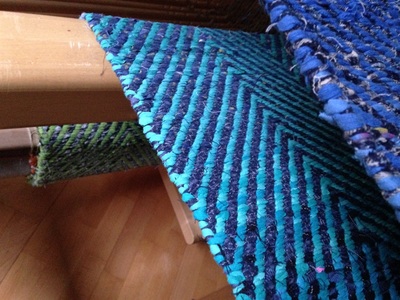
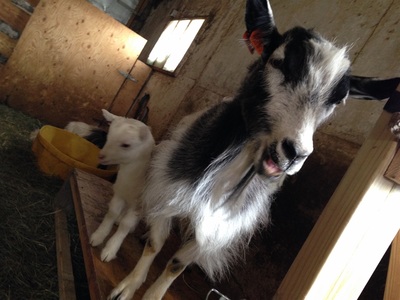
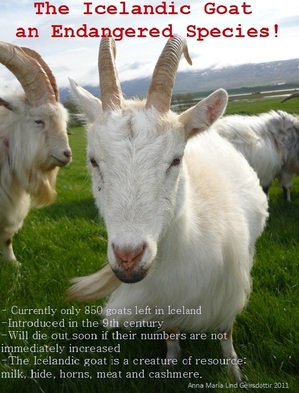
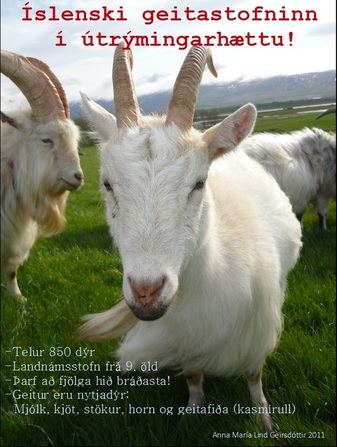
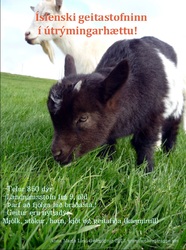
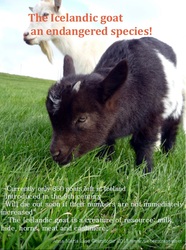
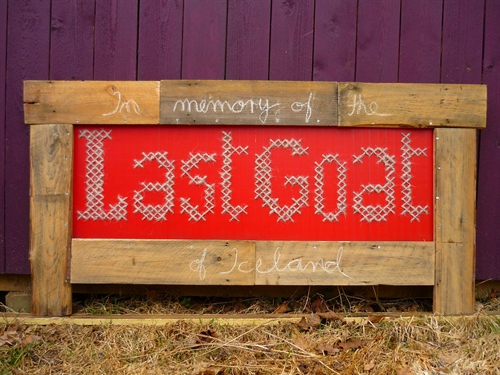
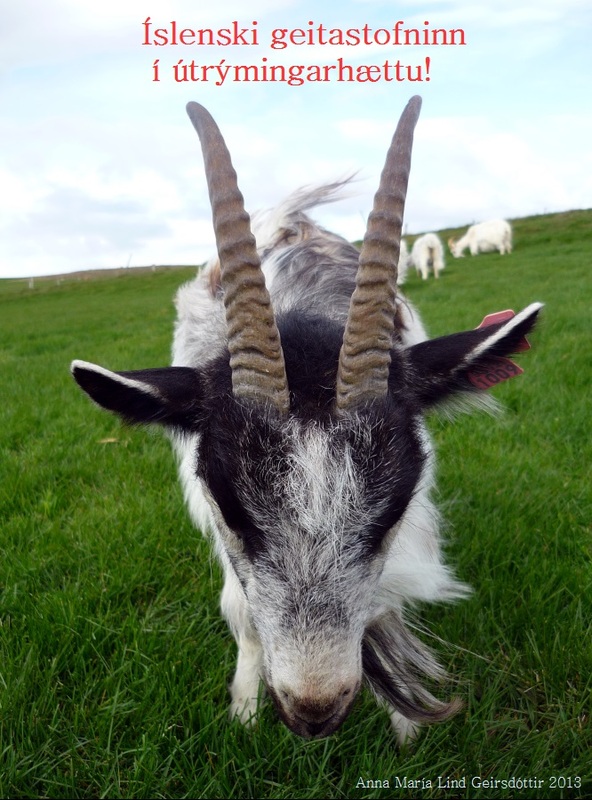
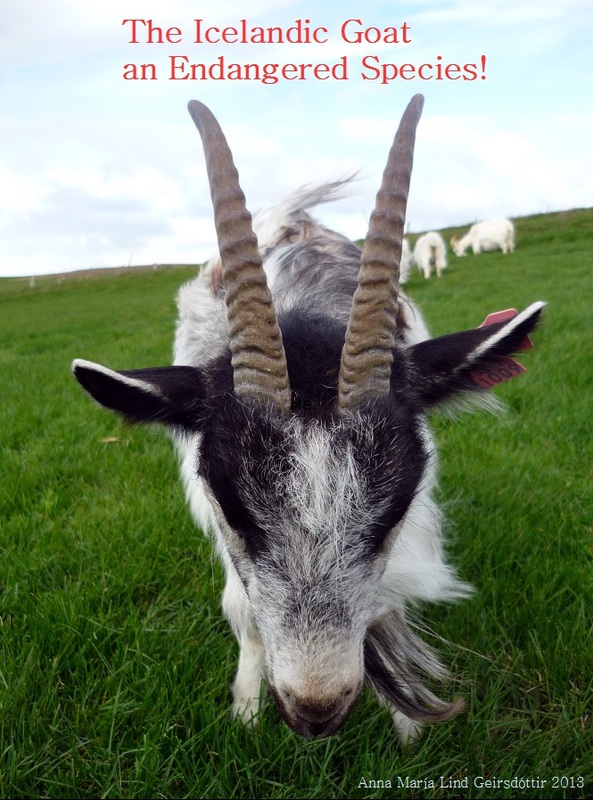
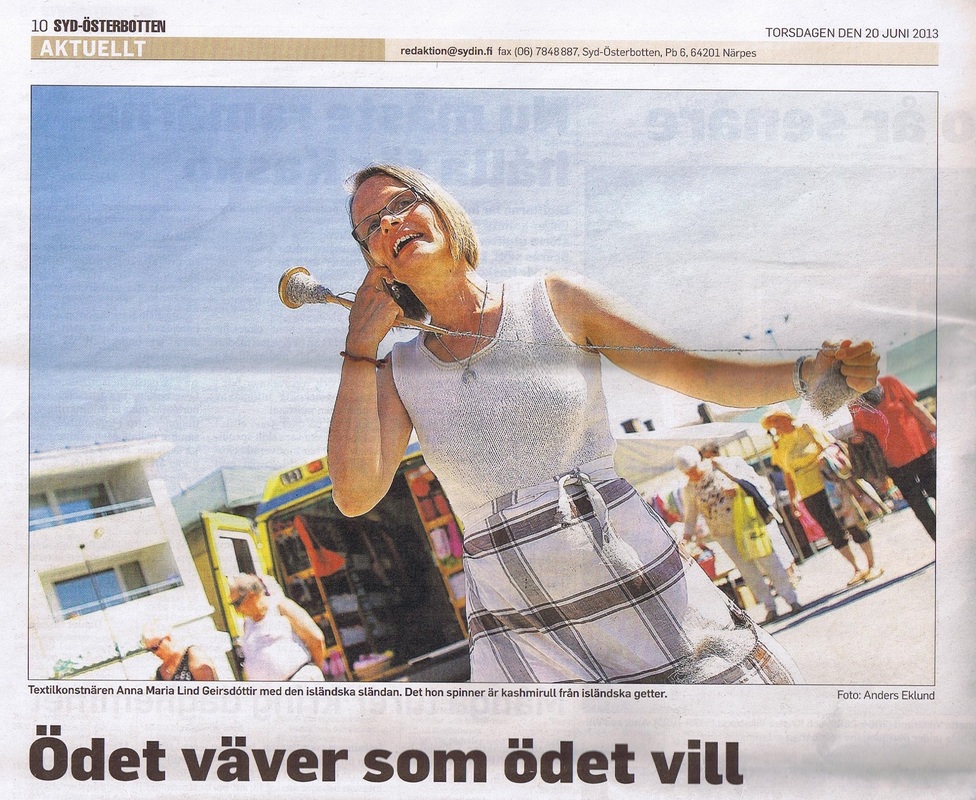
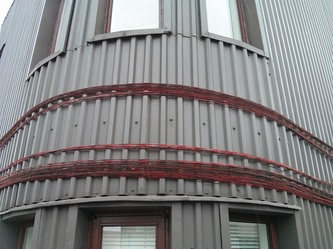
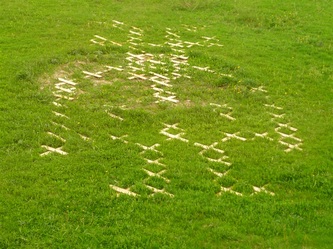
 RSS Feed
RSS Feed